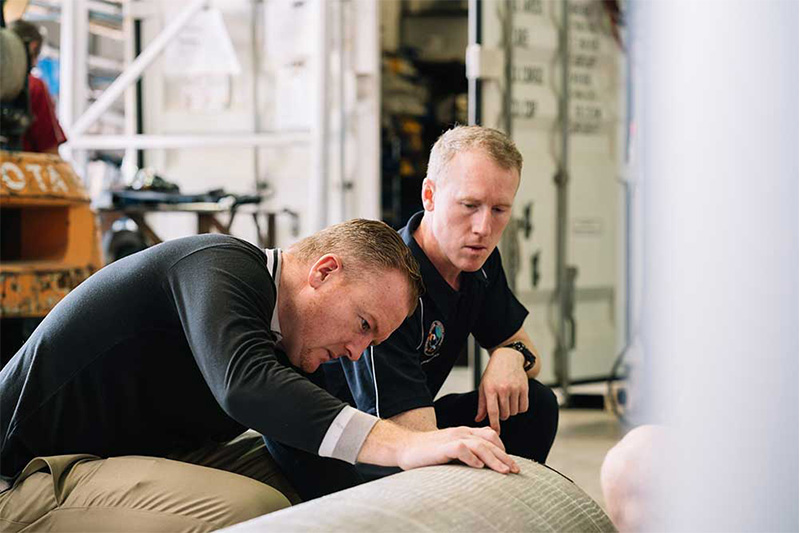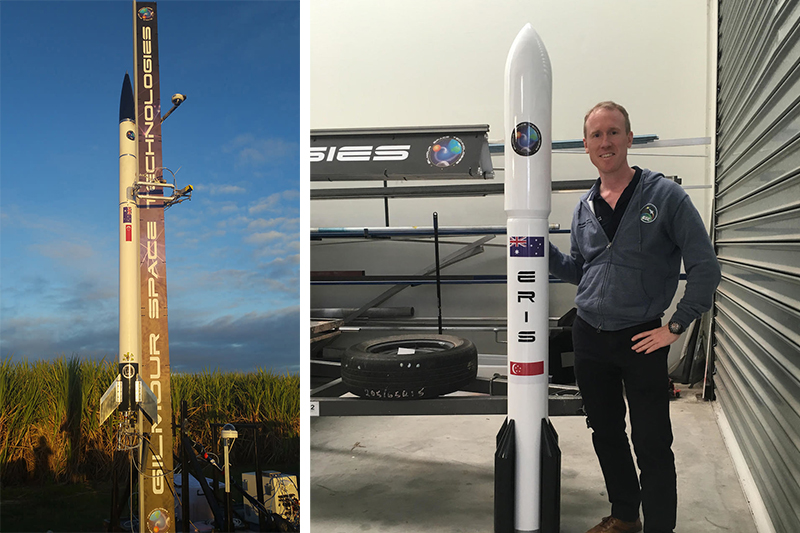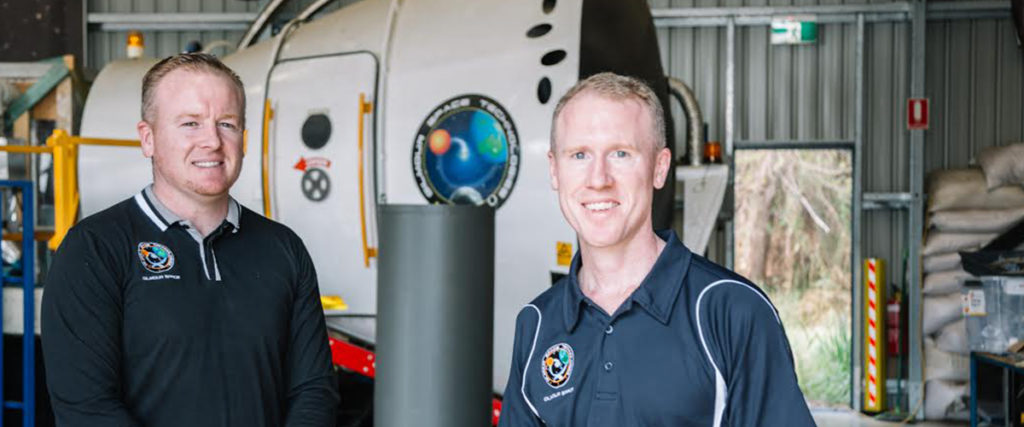Banker turned rocketeer Adam Gilmour, the brains behind Australian space tech startup Gilmour Space Technologies is on a mission to build affordable rockets that could turn our space dreams into reality.
Historically, the realm outer space has been reserved for only the most powerful of nations. However, as the commercial space industry continues to heat up with a new generation of space tech companies such as SpaceX and Blue Origins leading the charge, the world has seen a democratisation of its outer reaches. Australia and Singapore based enterprise Gilmour Space Technologies is one such startup gearing up to step into the zone. Proffering its low-cost hybrid rocket and affordable space launch services, they recently entered into a Space Act Agreement with NASA to collaborate on research, technology development and educational initiatives. We talked to its CEO and co-founder Adam Gilmour about his ambition to improve life on earth whilst building future in space.

Before he waded dauntlessly into rocket science with zero background in aerospace, Adam had built his space fantasy around his collection of Star Wars Lego. “I’ve always been a space fan and always wanted to go to space myself, but, like most people, I thought it was just a dream,” says the Australian. Back then, he would have been right. Until 2004, it was unthinkable that a private team could afford to build a rocket, not to mention launch one with a shoestring budget. “Launch access and costs are among the biggest obstacles facing anyone who wants to get a payload (human or cargo) to space,” says Adam.
Burt Rutan, a legendary aeroplane designer and leader behind the winning team of the space contest Ansari X-Prize in 2004, however, proved otherwise. With only USD 26 million funded by Microsoft co-founder Paul Allen, Burt and his team built SpaceShipOne, a manned spacecraft that can launch into space twice in a span of two weeks. Their success was not only a technological demonstration of the future possibility of low-cost space exploration, but it also convinced Adam that his dream was not merely a pipe dream.

“This was a revolution – suddenly, space didn’t have to cost a billion. If Burt could build a space transport with tens of millions, that means I could get involved as well,” says Adam, a former banker at Citibank who had carved out a successful career over his two decades in the financial markets. “I felt that I had achieved a lot in my banking career, but I wanted to do a lot more with my life.”
Aside from a personal quest, Adam also spotted a profitable void in the government’s liberalisation of the space industry. “Most national space agencies are aware that they could be saving a lot of money by outsourcing certain space activities to the private sector. Space agencies will move towards co-ordinating the mission planning and leave the building of spacecraft and rockets to the private industry.” That industry, according to Morgan Stanley, is projected to grow into an economy worth more than USD 1.1 trillion by 2040. Eyeing up this opportunity, Adam took a stab at starting his own space business, co-founding Gilmour Space Technologies alongside his brother James in 2013.
Adam’s startup, like many others in his field, capitalises on the boom in small satellites. “The global space economy is defined very much by the satellite industry, which, thanks to recent advances and the miniaturisation in technology, is moving from large satellites to much smaller ones,” he explains. The global market for small satellite launches, as The Financial Times predicts, is expected to be worth some USD 25 billion over the next two decades. “Satellites today power or enable a lot of applications and technologies we take for granted on Earth. For example, earth observation satellites help farmers to manage their crops and livestock or miners to find new minerals; position and navigation satellites enable the GPS on our phones and help logistics companies keep track of their trucks and ships; whilst communications satellites enable mobile calls, bank transfers, your WhatsApp messaging and Skype.”

“The problem now is that most of the rockets still cater to big satellites, leaving small satellite players with few options for launch,” Adam points out. And that’s where his company comes in. Marshalling the efforts of his team of engineers and ex-NASA experts, Adam has been developing launch vehicles (a.k.a. rockets) specifically designed to provide low-cost launches for small satellites. With his entrepreneurial spirit and many hours spent on books and NASA’s online publications on hybrid rockets, liquid oxidisers and turbopumps, Adam has led his company through multiple exciting breakthroughs. Those include a successful rocket motor test for the CubeSat propulsion system – the world’s first small satellite propulsion system designed for interplanetary missions that can potentially send CubeSats (a nanosatellite smaller than a microwave oven) to the moon and beyond.
Having recently raised AUD 19 million, the space company plans to launch their first commercial hybrid rocket to orbit in 2020. And it’s not just your typical rocket, but one that is set to reduce the cost for each orbital launch substantially to around US$35,000 per kilogram into low earth orbit. The trick, Adam says, is to design with cost-efficiency and simplicity in mind. His hybrid rocket adopts a simple form of propulsion that is safer to operate than other chemical propulsion systems used today. To analogise, he says – they are building a van to go into space when everyone else is building a Rolls-Royce.
By lowering the cost of satellite launch, the hope is that the digital divide is bridged, and better connectivity on earth provided. “In the near future, as the cost of satellite development and launch vehicles fall further, constellations of smaller, cheaper satellites in low earth orbits could enable even cheaper and faster mobile internet, anytime, anywhere on Earth; transmitting massive amounts of data for our mobile needs, autonomous vehicle systems and Internet of Things; and more,” Adam predicts.
And, as if those ambitions aren’t starry enough, they’re still just a part of the bigger picture. To shoot for the stars and support long-term development in space, building sustainable infrastructures and life support systems is imperative. Gilmour Space has signed an agreement that allows it to collaborate with NASA on various initiatives, including space transportation, in-situ resource utilisation and sustainability. Ultimately, Adam would like to harness his technology to facilitate further activities and innovations around space exploration and open the space frontier to human settlement. “In the far future, I believe humankind will expand beyond our solar system and explore other star systems,” he imagines, “I think it’s inevitable that humankind will one day colonise space and I want to be part of that.”





